Abstract
Sib-pair linkage analysis has been proposed for identifying genes that predispose to common diseases. We have shown that the presence of assortative mating and multiple disease-susceptibility loci (genetic heterogeneity) can increase the required sample size for affected-affected sib pairs several fold over the sample size required under random mating. We propose a new test statistic based on sib trios composed of either one unaffected and two affected siblings or one affected and two unaffected siblings. The sample-size requirements under assortative mating and multiple disease loci for these sib-trio statistics are much smaller, under most conditions, than the corresponding sample sizes for sib pairs. Study designs based on data from sib trios with one or two affected members are recommended whenever assortative mating and genetic heterogeneity are suspected.
Full text
PDF
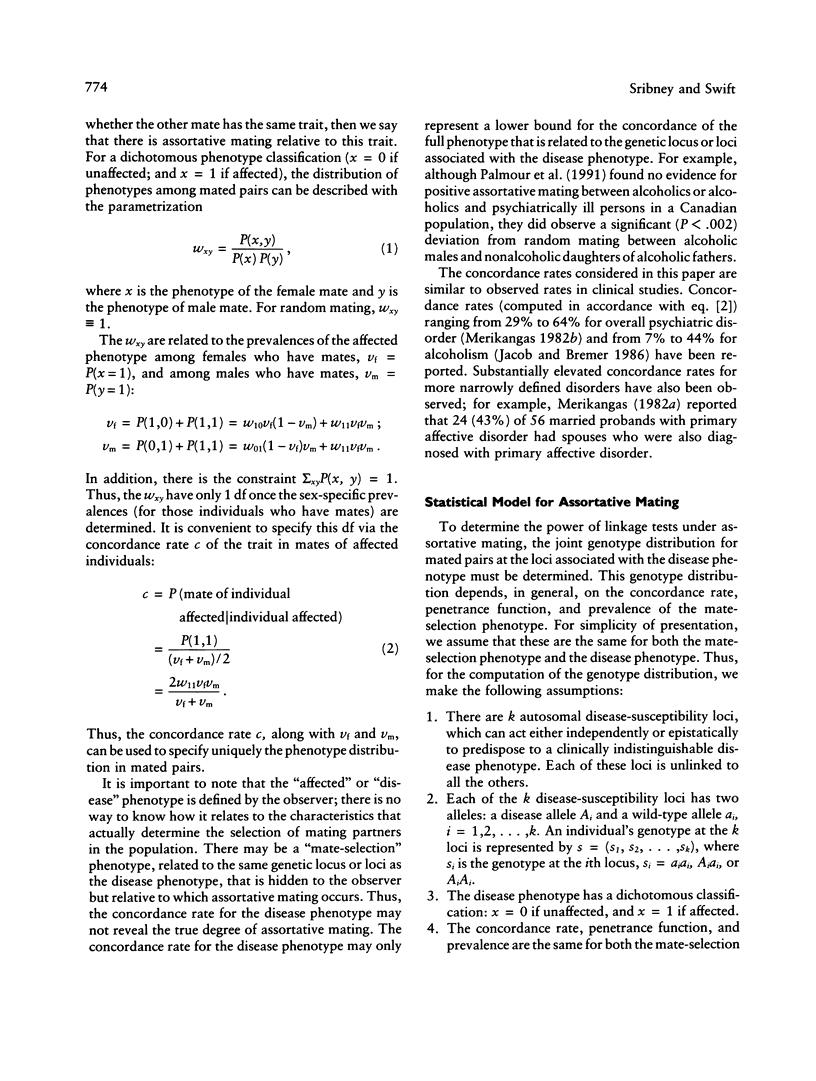
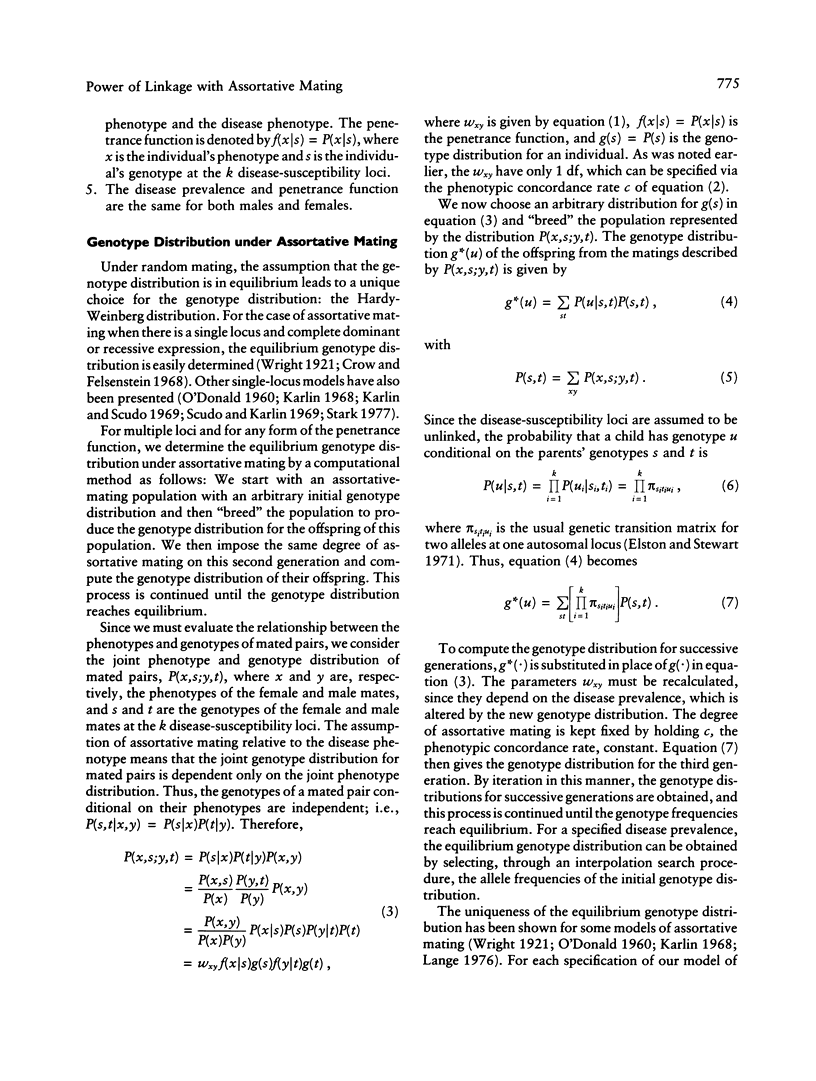
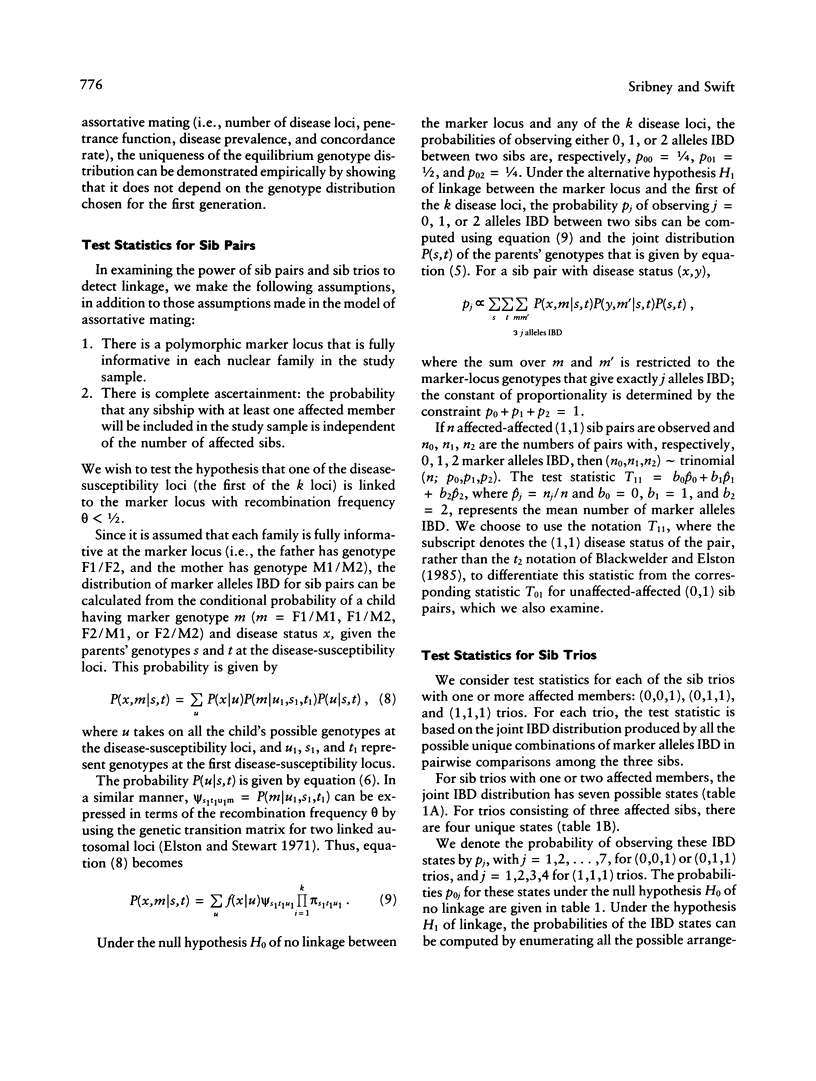

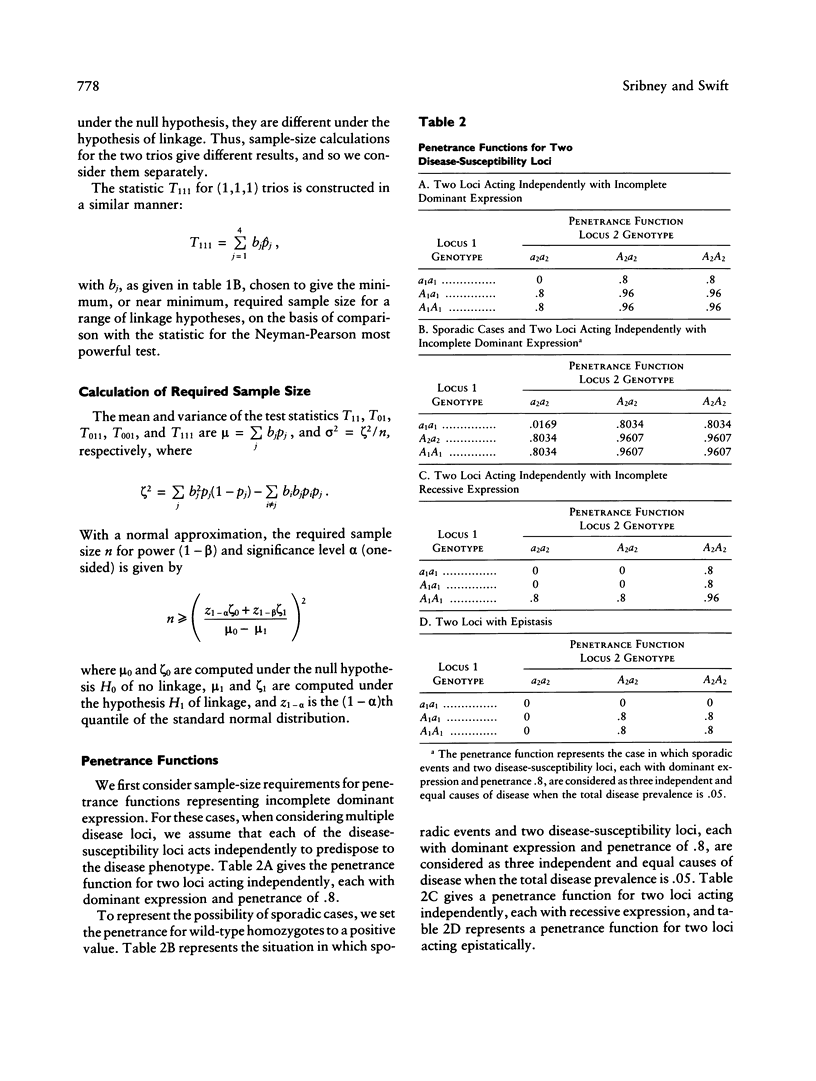
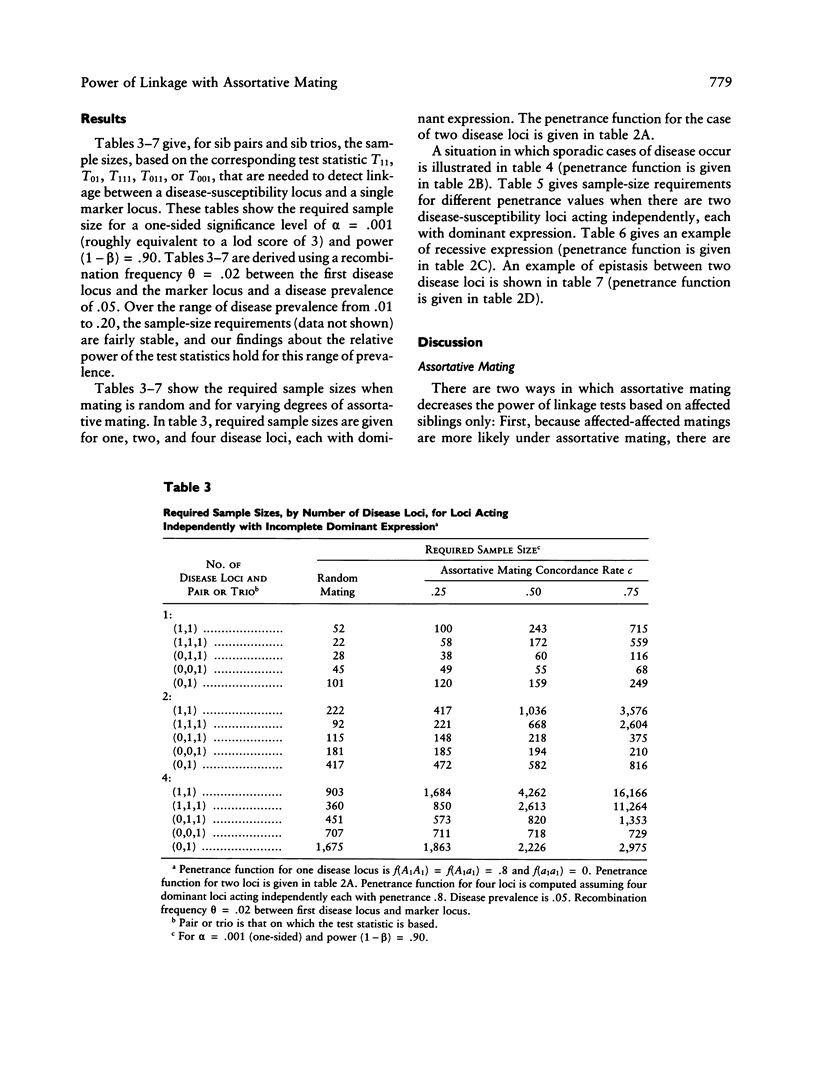
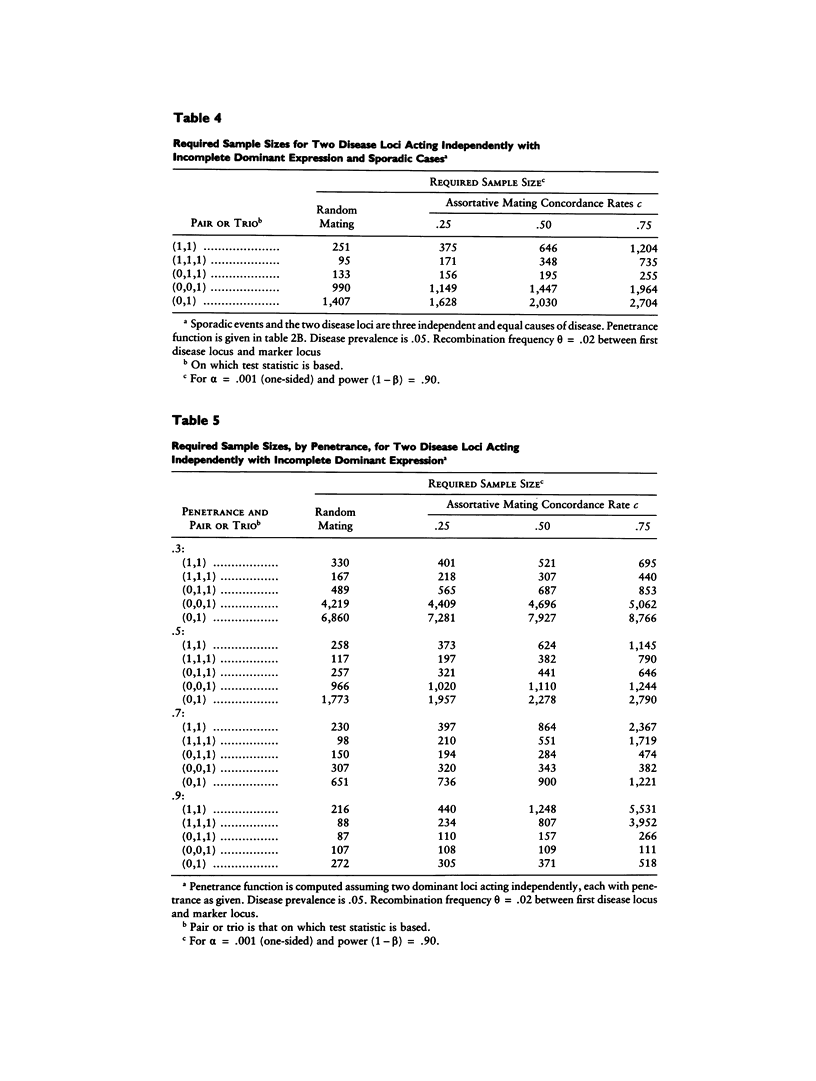
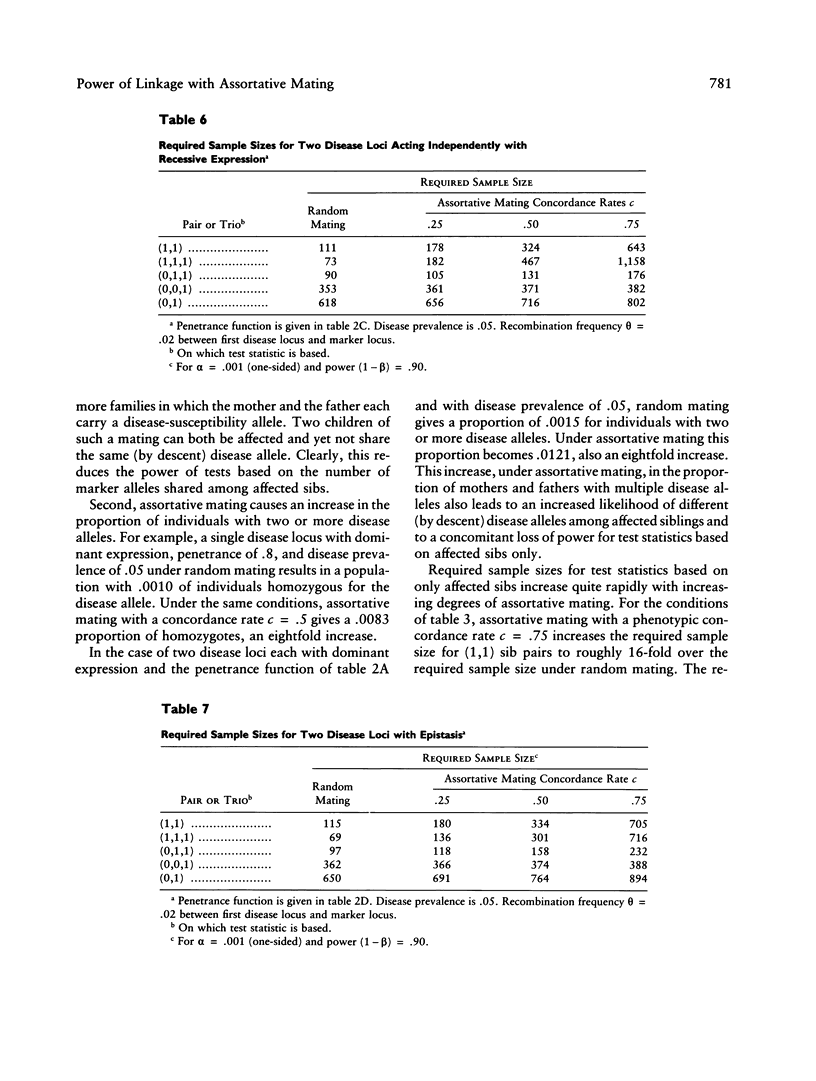

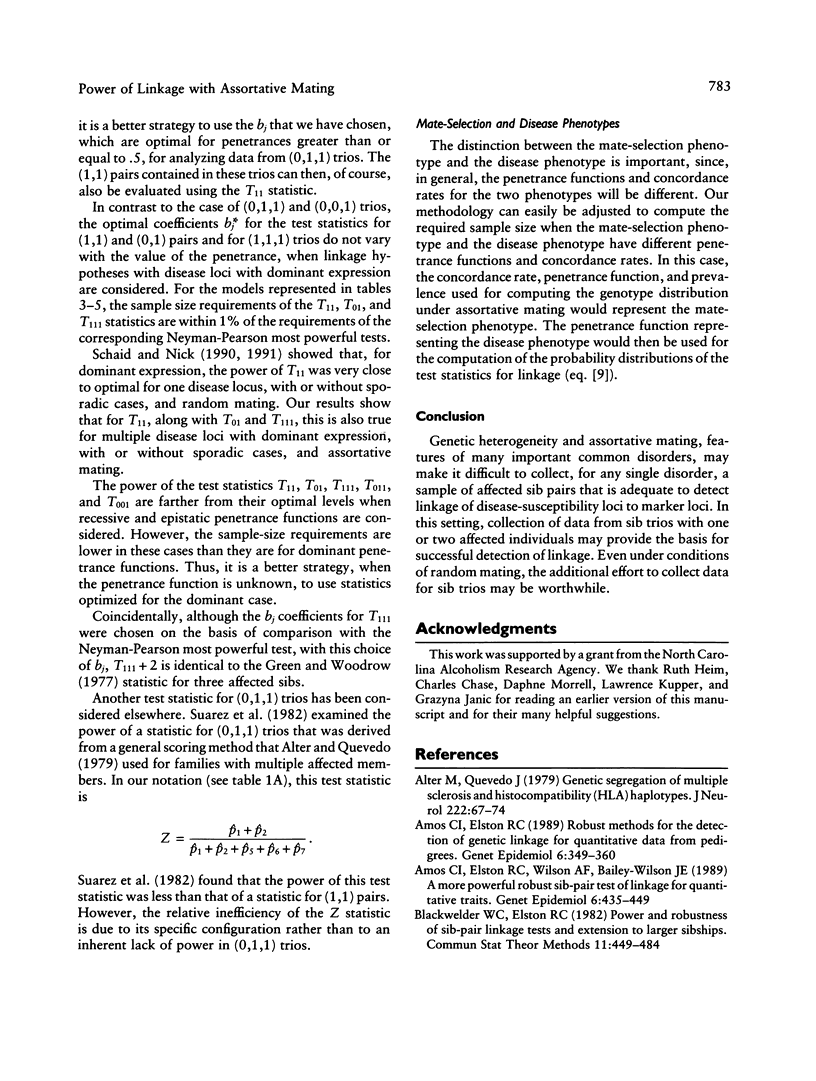
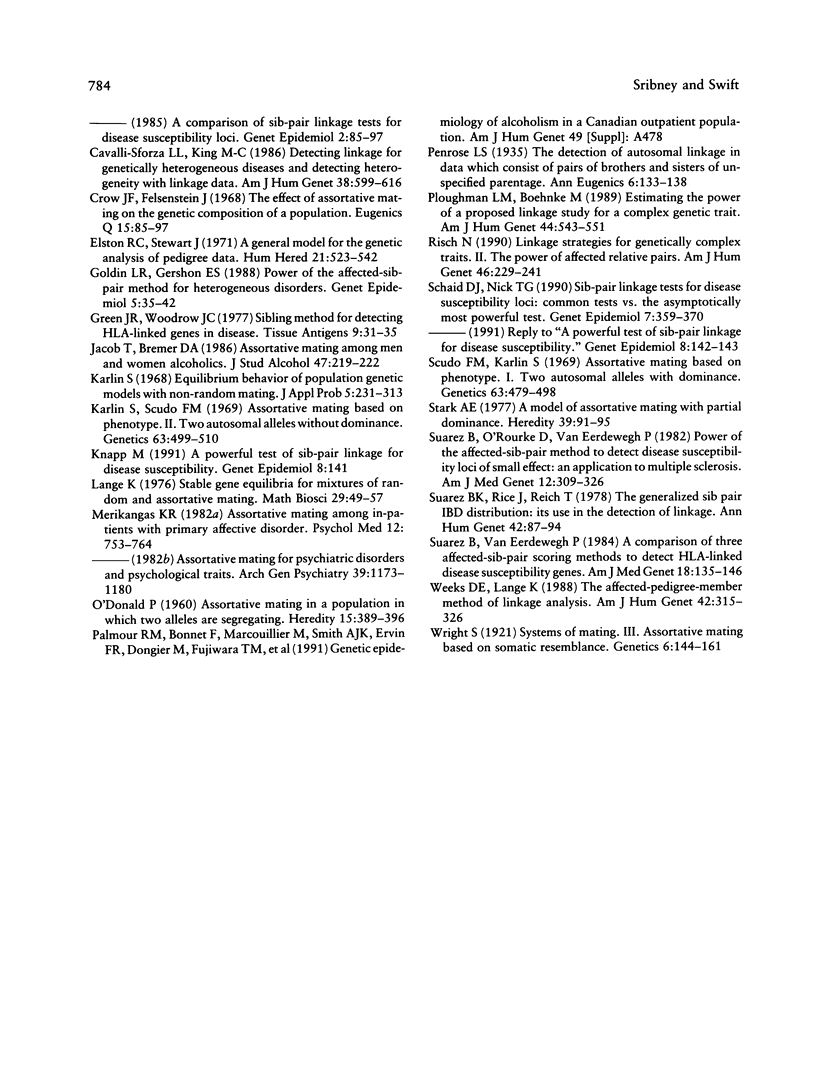
Selected References
These references are in PubMed. This may not be the complete list of references from this article.
- Alter M., Quevedo J. Genetic segregation of multiple sclerosis and histocompatibility (HLA) haplotypes. J Neurol. 1979;222(2):67–74. doi: 10.1007/BF00313000. [DOI] [PubMed] [Google Scholar]
- Amos C. I., Elston R. C. Robust methods for the detection of genetic linkage for quantitative data from pedigrees. Genet Epidemiol. 1989;6(2):349–360. doi: 10.1002/gepi.1370060205. [DOI] [PubMed] [Google Scholar]
- Amos C. I., Elston R. C., Wilson A. F., Bailey-Wilson J. E. A more powerful robust sib-pair test of linkage for quantitative traits. Genet Epidemiol. 1989;6(3):435–449. doi: 10.1002/gepi.1370060306. [DOI] [PubMed] [Google Scholar]
- Cavalli-Sforza L. L., King M. C. Detecting linkage for genetically heterogeneous diseases and detecting heterogeneity with linkage data. Am J Hum Genet. 1986 May;38(5):599–616. [PMC free article] [PubMed] [Google Scholar]
- Crow J. F., Felsenstein J. The effect of assortative mating on the genetic composition of a population. Eugen Q. 1968 Jun;15(2):85–97. doi: 10.1080/19485565.1968.9987760. [DOI] [PubMed] [Google Scholar]
- Elston R. C., Stewart J. A general model for the genetic analysis of pedigree data. Hum Hered. 1971;21(6):523–542. doi: 10.1159/000152448. [DOI] [PubMed] [Google Scholar]
- Goldin L. R., Gershon E. S. Power of the affected-sib-pair method for heterogeneous disorders. Genet Epidemiol. 1988;5(1):35–42. doi: 10.1002/gepi.1370050104. [DOI] [PubMed] [Google Scholar]
- Green J. R., Woodrow J. C. Sibling Method for Detecting HLA-linked genes in disease. Tissue Antigens. 1977 Jan;9(1):31–35. doi: 10.1111/j.1399-0039.1977.tb01076.x. [DOI] [PubMed] [Google Scholar]
- Jacob T., Bremer D. A. Assortative mating among men and women alcoholics. J Stud Alcohol. 1986 May;47(3):219–222. doi: 10.15288/jsa.1986.47.219. [DOI] [PubMed] [Google Scholar]
- Karlin S., Scudo F. M. Assortative mating based on phenotype. II. Two autosomal alleles without dominance. Genetics. 1969 Oct;63(2):499–510. doi: 10.1093/genetics/63.2.499. [DOI] [PMC free article] [PubMed] [Google Scholar]
- Knapp M. A powerful test of sib-pair linkage for disease susceptibility. Genet Epidemiol. 1991;8(2):141–143. doi: 10.1002/gepi.1370080207. [DOI] [PubMed] [Google Scholar]
- Merikangas K. R., Spiker D. G. Assortative mating among in-patients with primary affective disorder. Psychol Med. 1982 Nov;12(4):753–764. doi: 10.1017/s0033291700049059. [DOI] [PubMed] [Google Scholar]
- Ploughman L. M., Boehnke M. Estimating the power of a proposed linkage study for a complex genetic trait. Am J Hum Genet. 1989 Apr;44(4):543–551. [PMC free article] [PubMed] [Google Scholar]
- Risch N. Linkage strategies for genetically complex traits. II. The power of affected relative pairs. Am J Hum Genet. 1990 Feb;46(2):229–241. [PMC free article] [PubMed] [Google Scholar]
- Schaid D. J., Nick T. G. Sib-pair linkage tests for disease susceptibility loci: common tests vs. the asymptotically most powerful test. Genet Epidemiol. 1990;7(5):359–370. doi: 10.1002/gepi.1370070506. [DOI] [PubMed] [Google Scholar]
- Scudo F. M., Karlin S. Assortative mating based on phenotype. I. Two alleles with dominance. Genetics. 1969 Oct;63(2):479–498. doi: 10.1093/genetics/63.2.479. [DOI] [PMC free article] [PubMed] [Google Scholar]
- Stark A. E. A model of assortative mating with partial dominance. Heredity (Edinb) 1977 Aug;39(1):91–95. doi: 10.1038/hdy.1977.45. [DOI] [PubMed] [Google Scholar]
- Suarez B. K., Rice J., Reich T. The generalized sib pair IBD distribution: its use in the detection of linkage. Ann Hum Genet. 1978 Jul;42(1):87–94. doi: 10.1111/j.1469-1809.1978.tb00933.x. [DOI] [PubMed] [Google Scholar]
- Suarez B. K., Van Eerdewegh P. A comparison of three affected-sib-pair scoring methods to detect HLA-linked disease susceptibility genes. Am J Med Genet. 1984 May;18(1):135–146. doi: 10.1002/ajmg.1320180117. [DOI] [PubMed] [Google Scholar]
- Suarez B., O'Rourke D., Van Eerdewegh P. Power of the affected-sib-pair method to defect disease susceptibility loci of small effect: an application to multiple sclerosis. Am J Med Genet. 1982 Jul;12(3):309–326. doi: 10.1002/ajmg.1320120309. [DOI] [PubMed] [Google Scholar]
- Weeks D. E., Lange K. The affected-pedigree-member method of linkage analysis. Am J Hum Genet. 1988 Feb;42(2):315–326. [PMC free article] [PubMed] [Google Scholar]
- Wright S. Systems of Mating. III. Assortative Mating Based on Somatic Resemblance. Genetics. 1921 Mar;6(2):144–161. doi: 10.1093/genetics/6.2.144. [DOI] [PMC free article] [PubMed] [Google Scholar]


